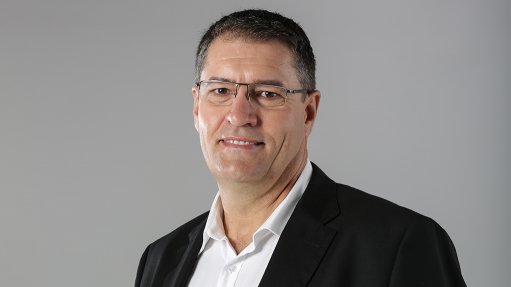Mining sector helps Mozambique but stronger links with local business needed
Over the past five years, $5-billion has been invested in the exploitation of mineral resources in Mozambique, creating some 15 000 jobs.
Over the same period, the mining industry has paid more than $1-billion in taxes and royalties to the Mozambique authorities.
These figures were recently revealed by the country’s Mineral Resources Minister, Esperança Bias. She was speaking at a public consultation regarding mineral resources policy and strategy, and the social responsibilities of the extractive industry. The documents discussed at the meeting would soon be submitted to the Mozambique Council of Ministers (Cabinet) for final review and approval, the Maputo-based newspaper, Notícias, reported.
She expressed the view that investments in the sector would surely grow further, with the implementation of various projects now being developed and with the entry into the country of new mining and hydrocarbons companies. Prospecting for mineral resources was taking place over nearly all the country’s territory. Currently, Mozambique is exporting coal (mainly to Asia), natural gas (mainly to South Africa), heavy mineral sands and precious stones (to markets around the world).
One of the companies currently prospecting in the country is Triton Minerals, of Australia, which is hunting for graphite. The company was recently granted a further exploration licence, expanding its exploration area. “The granting of Exploration Licence 5966 now provides the company with the ability to start exploring the highly prospective graphite area of the Nicanda Hill prospect,” declared company MD Brad Boyle. “Reconnaissance geological mapping has identified a number of graphitic exposures over a zone roughly 3.75 km long.” Nicanda Hill lies in the Balama district of Cabo Delgado, Mozambique’s most northern province.
“Triton will now expand the current exploration programme, which was pre- viously focused on drill- testing the 5 km-long graphite and vanadium mineralisation zone at the Cobra Plains prospect”, he added. “The company is hoping to build on the graphite and vanadium mineralisation identified at Cobra Plains to date [using] the expanded exploration programme, which will now include the Nicanda Hill prospect, bringing the company closer to investi- gating the potential of the Balama North project to host multiple, very large graphite deposits.”
In its press release, the company reported: “The graphitic mineralisation exposures identified in both the Nicanda Hill and Cobra Plains prospects show a number of physical similarities.” It was reviewing its exploration plan so as to increase its knowledge of substructures and evaluate the continuity in the graphite mineralisation between its existing licence area, at Cobra Plains, and its new licence area at Nicanda Hill. Together, these two areas are more than 10 km long.
Separately, the Confederation of Economic Associations of Mozambique (CTA is its abbreviation in Portuguese) also recently held a consultation meeting in Maputo. The aim was to develop business connections between the coal and natural gas industries and small and medium-size enterprises (SMEs). The event was attended by representatives of local businesses, mining and hydrocarbons companies, commercial banks, the agriculture and tourism sectors and government. “The essential idea is to create a connection between the multinationals with the capability to exploit the natural resources and the Mozambique companies, because, otherwise, we will have offshore platforms or great projects operating in the country, which will simply produce and export without being connected to the national economy,” explained CTA economic adviser Hipólito Hamela.
Meanwhile, tensions have been high in the provinces of Sofala and Manica. Sofala lies between the coal-rich Tete province and the sea. Its capital is Beira, currently the only export harbour for coal from the interior. Manica is directly west of Sofala and south of (but does not border on) Tete. The tension is the result of recent clashes between the Mozambique security forces and armed members of the opposition party, Renamo, generating fears that the country could be sliding back towards civil war.
Comments
Press Office
Announcements
What's On
Subscribe to improve your user experience...
Option 1 (equivalent of R125 a month):
Receive a weekly copy of Creamer Media's Engineering News & Mining Weekly magazine
(print copy for those in South Africa and e-magazine for those outside of South Africa)
Receive daily email newsletters
Access to full search results
Access archive of magazine back copies
Access to Projects in Progress
Access to ONE Research Report of your choice in PDF format
Option 2 (equivalent of R375 a month):
All benefits from Option 1
PLUS
Access to Creamer Media's Research Channel Africa for ALL Research Reports, in PDF format, on various industrial and mining sectors
including Electricity; Water; Energy Transition; Hydrogen; Roads, Rail and Ports; Coal; Gold; Platinum; Battery Metals; etc.
Already a subscriber?
Forgotten your password?
Receive weekly copy of Creamer Media's Engineering News & Mining Weekly magazine (print copy for those in South Africa and e-magazine for those outside of South Africa)
➕
Recieve daily email newsletters
➕
Access to full search results
➕
Access archive of magazine back copies
➕
Access to Projects in Progress
➕
Access to ONE Research Report of your choice in PDF format
RESEARCH CHANNEL AFRICA
R4500 (equivalent of R375 a month)
SUBSCRIBEAll benefits from Option 1
➕
Access to Creamer Media's Research Channel Africa for ALL Research Reports on various industrial and mining sectors, in PDF format, including on:
Electricity
➕
Water
➕
Energy Transition
➕
Hydrogen
➕
Roads, Rail and Ports
➕
Coal
➕
Gold
➕
Platinum
➕
Battery Metals
➕
etc.
Receive all benefits from Option 1 or Option 2 delivered to numerous people at your company
➕
Multiple User names and Passwords for simultaneous log-ins
➕
Intranet integration access to all in your organisation


















